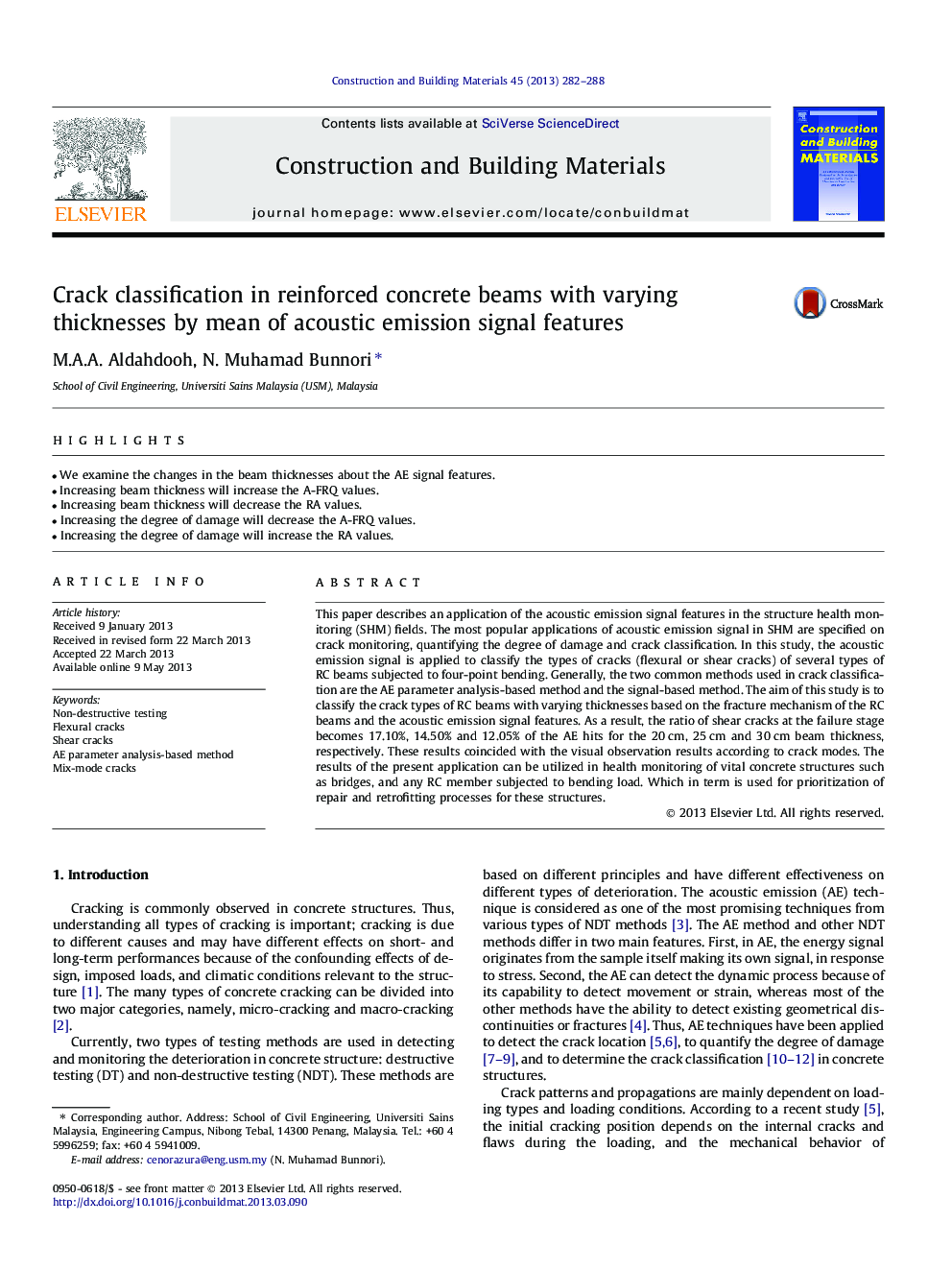| Article ID | Journal | Published Year | Pages | File Type |
|---|---|---|---|---|
| 258227 | Construction and Building Materials | 2013 | 7 Pages |
•We examine the changes in the beam thicknesses about the AE signal features.•Increasing beam thickness will increase the A-FRQ values.•Increasing beam thickness will decrease the RA values.•Increasing the degree of damage will decrease the A-FRQ values.•Increasing the degree of damage will increase the RA values.
This paper describes an application of the acoustic emission signal features in the structure health monitoring (SHM) fields. The most popular applications of acoustic emission signal in SHM are specified on crack monitoring, quantifying the degree of damage and crack classification. In this study, the acoustic emission signal is applied to classify the types of cracks (flexural or shear cracks) of several types of RC beams subjected to four-point bending. Generally, the two common methods used in crack classification are the AE parameter analysis-based method and the signal-based method. The aim of this study is to classify the crack types of RC beams with varying thicknesses based on the fracture mechanism of the RC beams and the acoustic emission signal features. As a result, the ratio of shear cracks at the failure stage becomes 17.10%, 14.50% and 12.05% of the AE hits for the 20 cm, 25 cm and 30 cm beam thickness, respectively. These results coincided with the visual observation results according to crack modes. The results of the present application can be utilized in health monitoring of vital concrete structures such as bridges, and any RC member subjected to bending load. Which in term is used for prioritization of repair and retrofitting processes for these structures.
